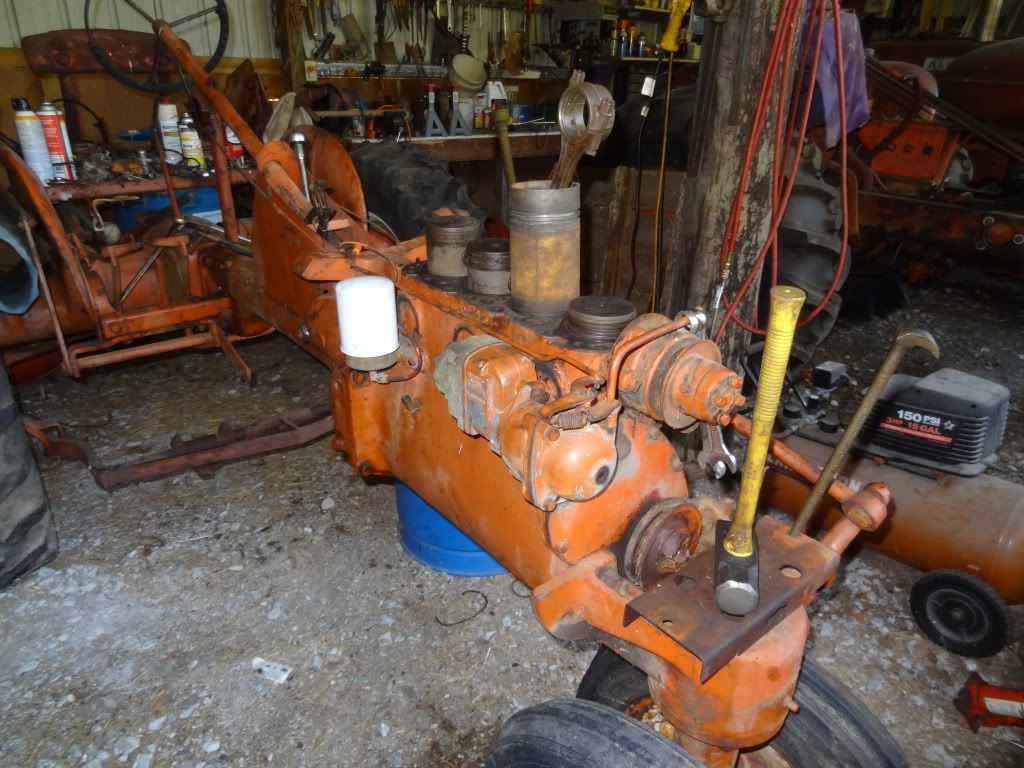I’m in the process of restoring a 1941 Allis C. She belonged to my father-in-law, and when he passed away a year ago, my mother-in-law asked me if I wanted it to
restore. How could I pass that up? Here’s what she looked like when she followed
me home over 4th of July.:
I don’t have a lot of experience in rebuilding engines. My father-in-law walked me through rebuilding a WD about 10 years ago, but I’ve not done a lot since then. I’ve begun tearing the C down. Discovered the motor was stuck, so I spent today getting that freed up. I ended up pushing the pistons on up through the top to get them free. The #2 cylinder sleeve came with it when I knocked it free.
Here’s what she looks like now:
Between the #2 and #3 cylinder is the standard crack in the block. Does this look any worse than normal? Can the block be salvaged or should I punt and start over at this point?
Other fun facts that might be important: when I drained the oil pan, I got about a
minute of pure water when I undid the plug. Then straight oil, about 4 quarts. Then, later, when I opened the block drain I got virtually pure anti-freeze, over a gallon. The tractor was parked under an apple tree for about 8 years, although “it was running when
he parked it”. I moved it under cover last October, then brought it home in July.
The crank turns at this point, although it’s not really loose- I have to work at it to turn it. I’ve got the clutch pedal clamped in, and the transmission is in neutral, so it
should just be the crank turning the flywheel at this point, right? Should it be looser than what I’m feeling or is that about right?
Where do I go from here? Do I need to replace all the sleeves and/or pistons/ and/or connecting rods? What should I be looking for to help decide? As long as I have it torn
down to this point, what else should I think about doing?
I appreciate all the help this board can give me. Sorry for the length of this- wanted to give as much info as I could.
Thanks in advance!
Boilerpete
P.S. Hope this pictures come through. If not, I'll try to post them separately.
Edited by boilerpete - 05 Aug 2012 at 8:13pm









 Topic Options
Topic Options

 Post Options
Post Options Thanks(0)
Thanks(0)








